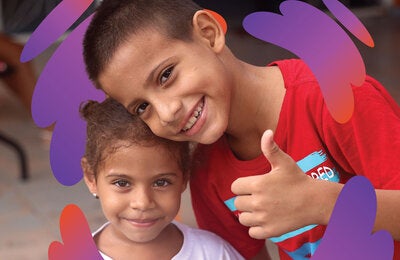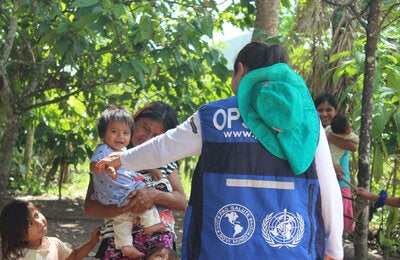
GEORGETOWN, 5 SEPTEMBER 2023- The Ministry of Health in collaboration with PAHO/WHO supported by the European Union “Health Systems Strengthening for Universal Health Coverage Partnership Programme” Grant, conducted a planning meeting with Ministry of Health Surveillance unit, Regional team, Community Health Workers, and Part-time health workers. The purpose of the meeting was to discuss the field implementation of a Community-Based Surveillance model initiated in Region Six from August 2023.
Community-Based Surveillance (CBS) aims to support regular data collection for early identification of diseases and to ensure a coordinated response at the primary level of care. Also, CBS allows to break silos and better prepare communities for emergencies through a One Health approach.
A three-day interactive training for health workers and community key members was conducted prior to initiating the field activity. This was key to enable the preparation of community mapping, syndromic identification of communicable diseases and deaths through a digital tool.
During the field activity, mapping of the entire Crabwood Creek area up to Moleson Creek and Siparuta riverine community was conducted in addition to establishing linkages with local stakeholders. After baseline estimation of the total number of houses and population, the area that an individual part-time health worker would be responsible for surveillance was demarcated within each village.
Supportive supervision was provided to all the part-time health workers and community health workers to correctly identify diseases by syndromes and occurrence of unusual events and deaths. They were also trained in reporting cluster of syndromes and deaths in the community and on mosquito breeding site identification and its destruction/reporting.
Image 2: Supportive supervision for syndrome identification at Siparuta, Region Six, Guyana
Image 3: Health Education Session for Handwashing and Mosquito control at Crabwood Creek, Region Six, Guyana
Health workers trained were able to map entire communities and identify syndromic diseases for a coordinated response from the first level of care. Information, education, and communication handouts were also distributed. Also, health education sessions were conducted for identified syndromes.
While initially, some residents were skeptical in providing information; health workers trained were able to provide a clear explanation of the activity. Working with key community members (that were also trained), full support from residents in the two communities was secured.
The surveillance officer for the region is provided continued technical support in database management and use for analysis and response. A template was developed to support the region for surveillance data analysis.
Image 4: Technical Support to Surveillance Officer Region Six for database management and use
Image 5: Health workers at Crabwood Creek area after successfully completing flood response supported by PAHO/WHO
A flood that occurred at Crabwood Creek was reported to the health Centre community health worker who could engage the region for immediate preventive health measures. At Siparuta, fever and rash cases were diagnosed as Chicken pox and heath literacy/ preventive measures were instituted.
The planning meeting discussed the challenges from the field and next steps forward towards health care delivery for impact as well as enabling the surveillance unit with the one-health approach inter-linkages for response activities.
PAHO/WHO remains committed to providing technical support to the Ministry of Health to continue strengthening surveillance in Guyana.







